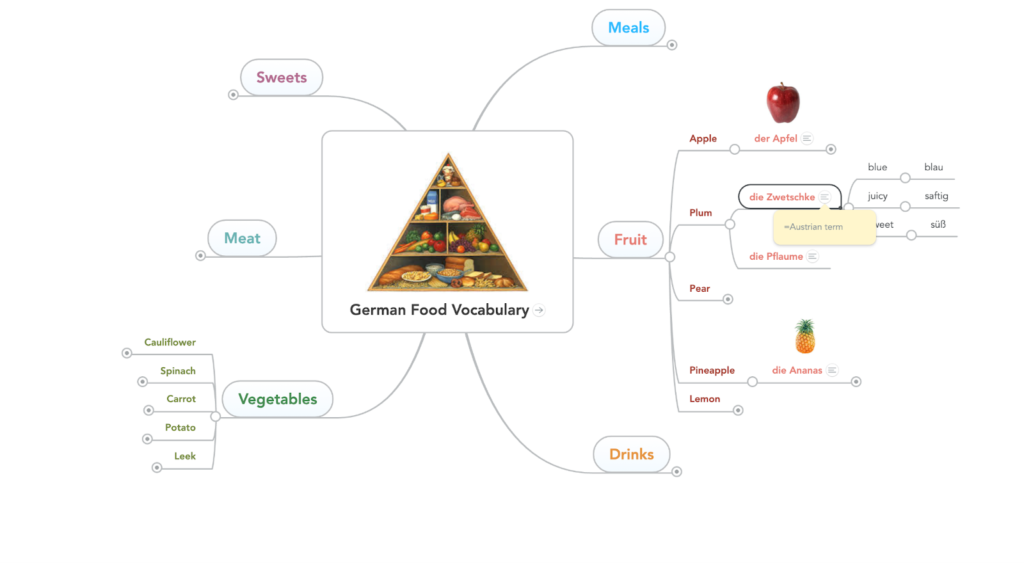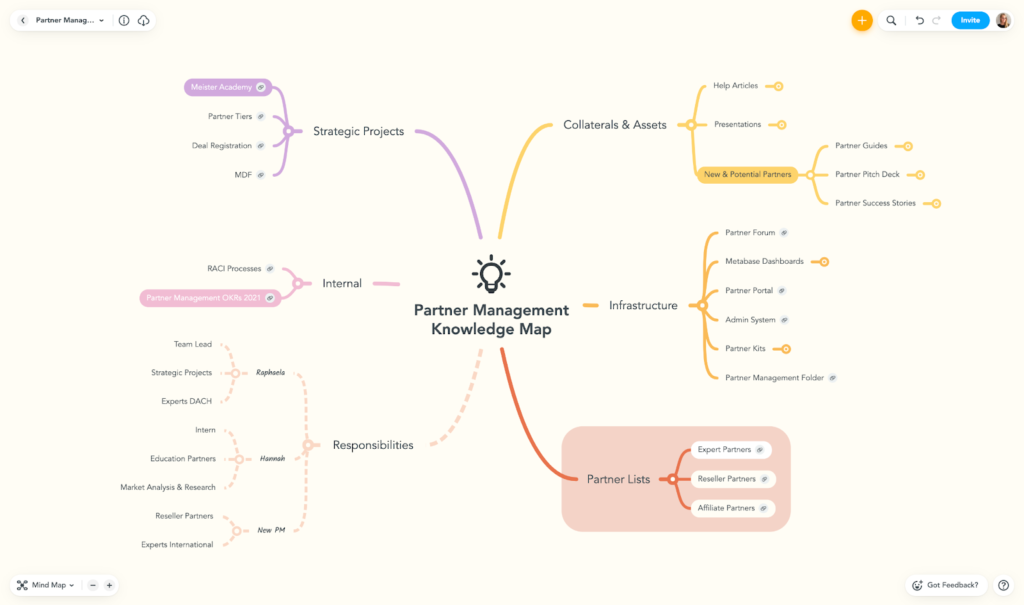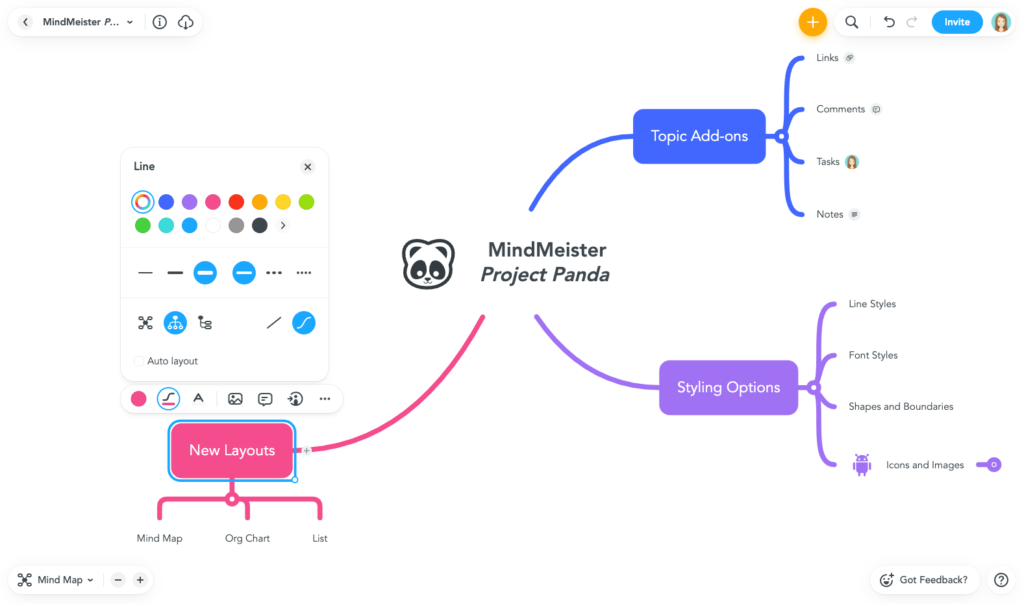Welcome to a new edition of our featured tools series, where we interview founders of tools for thought to understand why and how they built their product to be more creative, more productive, and to think better. This week, we talked with Michael Hollauf, the co-founder and CEO of Meister, maker of the popular productivity apps MindMeister and MeisterTask.
Michael studied Telematics at the University of Technology in Graz, Austria. After completing his studies, he accepted a position as Academic Assistant at the Institute for Information Processing and Computer Supported New Media. After several years working with knowledge management specialist Hyperwave, he started his first company with Till Vollmer, specializing in outsourcing web application development.
Michael and his co-founder went on to found Meister in 2006, bringing collaborative mind mapping software to prominence. The success of Meister is undeniable: since its founding, the company has grown to nearly a hundred employees specializing in productivity and creativity software, used by more than 20 million people worldwide.
As you may know, mind mapping is a powerful thinking tool to collect ideas, to connect them together, and to brainstorm innovative solutions to complex problems. It has also been associated with better memory and recall as well as improved creativity.
In this interview, we talked about collaborative mind mapping, the practical applications of mind mapping, the impact of mind mapping on memory, how to bridge the gap between different thinking modes, the role mind mapping can play in business and education, and much more. Enjoy the read!
Hi Michael, thank you so much for agreeing to this interview. How did you and your co-founder decide to start working on MindMeister almost fifteen years ago?
Like the great mind maps made with it, MindMeister all started with an idea. Back in 2006, what we saw was a gap in the market: although mind mapping has been a popular technique since the 1970s, no collaborative online mind mapping tool existed at that time. Although digital mind mapping tools were slowly introduced in the early noughties, these were standalone programs that did not allow users to map together at the same time from different computers. We realized this was a void that we could fill, but we knew we’d have to start slowly and build from the ground up.
MindMeister has grown from a tiny beta group of 200 volunteers to a powerhouse with over 20 million users, albeit slowly and steadily. We had 10,000 users by the time the product was launched officially in May 2007 and welcomed our millionth user in 2011. While other collaborative mind mapping products have emerged in this time, MindMeister remains the original and, in my opinion at least, the best.
We recently celebrated the 14th anniversary of the initial beta, which is remarkable: literally billions of ideas have been generated using our software, so I’m sure that great things exist in the world today that wouldn’t have happened without us.
MindMeister is going strong with millions of users from all around the world. What do you think makes MindMeister fundamentally different from other mind mapping tools?
I think the key to answering this question is actually understanding who our competitors actually are. For MindMeister, the question is quite complex: our tool is one of just a few dedicated online mind mapping platforms (others like XMind do exist) but many other providers, like Miro, integrate some sort of mind mapping capability into a broader product.
In terms of a dedicated, collaborative online mind mapping tool, I’m confident that MindMeister offers the best user experience because it simply looks and feels better than anything else out there. If you simply want to make a mind map — and especially if you want to create a collaborative mind map with friends or colleagues — MindMeister is the logical choice.
However, most people mind map for a specific purpose; primarily for business and education. This means that simply creating a beautiful mind map is not enough. It needs to have practical applications, which is why many competitors have shoehorned mind maps, often awkwardly, into different types of workplace tools. We go a different way. MindMeister’s integrations allow users to connect seamlessly with the software they already use for work and education. Thus, the user can easily apply their mind maps to any imaginable purpose, but the “purity” of their mind mapping experience is not diluted.
Let’s talk a bit more about mind mapping. Why do you think it’s such a powerful way to understand and generate ideas?
The benefits of mind mapping are scientifically proven: because of the powerful mental triggers they provide — such as images, colors, shapes and connections — you can use them to process and memorize large amounts of information. Studies have found that mind maps can improve memory by 10-15 percent, but improvements of up to 32 percent have been mentioned. Alongside improved recall, other key benefits include better comprehension and boosted creativity and productivity.
Of course, you’d be able to notice some of the benefits of mind mapping if you just used a pen and paper. However, like so much in the world, digitalizing the process leverages the benefits of the technique exponentially. The collaborative aspect is absolutely central to this: by mind mapping together, people can bounce ideas off each other and grow their concepts way beyond what would be possible in single-player mode.
For me personally, I think the secret to the success of digital mind mapping is that its applications are so broad. Whatever you’re doing, mind mapping enables you to learn faster, communicate more efficiently and brainstorm more effectively, which is why ever more businesses and educational institutions are using tools like MindMeister to get the most out of their teams, classes and the individuals within them.
Mind mapping works great in combination with other creativity systems. How does MindMeister help bridging the gap between different thinking modes?
I touched on the point earlier, but the modern user (especially in business) does not normally see mind mapping as a goal in itself, rather as an important part of an end-to-end workflow. This was part of the thinking behind the development of our task management tool MeisterTask, which we released in 2015. It simply was no longer enough to enable users to generate the ideas if there was no mechanism to execute the next steps. MindMeister and MeisterTask integrate very smoothly with each other, which helps our users develop their plans and execute them without duplicating information or increasing workload.
I see the realms of MindMeister and MeisterTask as split along the lines of “what” and “how”. MindMeister is about generating ideas, fueling creativity and developing concepts beyond a level that would be possible with more traditional techniques. On the other hand, MeisterTask’s place in the workflow comes after the ideation stage: the key tenet here is the ability to transform ideas into reality as quickly and efficiently as possible.
What’s one feature MindMeister offers that you are particularly proud of?
I like to think that MindMeister is about the ideas, not the software. Rather than a specific feature, what has made me particularly proud is how MindMeister has really taken off in other sectors, especially education.
When the coronavirus crisis began to take hold at the beginning of 2020, we made an enormous effort to reach out to educational institutions and to get them using MindMeister (for free, obviously). We were determined to help keep teaching on its feet, and it was hugely successful. MindMeister was adopted by hundreds of schools and universities, which helped people keep learning in turbulent circumstances — it is something that we can be very proud of.
And how do you personally use MindMeister?
I’m a dedicated mind mapper — it’s why we started MindMeister in the first place — so whenever I have a new idea to improve our tools or company, I use MindMeister to develop it. Following that, I invite the team to expand on the idea even further.
As a collaborative tool, MindMeister is much less fun if you’ve got no one to use it with, which is why I’m so pleased to see how much the team at Meister actually uses it. From onboarding new employees, to brainstorming new feature ideas, to managing our social events, we are a team of mind mapping enthusiasts, and our passion for what we do is reflected in our product.
How do you envision the future of MindMeister?
We’re currently working on an entirely new version of MindMeister, which we’ve called Project Panda. Rather than just adding features to the existing editor, Project Panda is a comprehensive reimagining of the tool: it consists of dozens of important updates to the way MindMeister looks, works, and interacts with other programs.
The development process has been extensive. We collected feedback from thousands of users, analyzed feature requests and other wishes and combined them with our own vision for the future of digital mind mapping. The results of this journey are reflected in the revolutionary look and feel of the all-new MindMeister — we’re currently still ironing out a few issues in the beta phase, but keep an eye out for the full release later this year.
I absolutely love the new editor. It’s smooth, it’s modern, it’s customizable — it’s simply a joy to create mind maps with. I also think that the improved integration with MeisterTask, as well as key features like outline mode, are necessary steps to keep MindMeister relevant in a rapidly-changing business and educational environment.
Thank you so much for your time, Michael! Where can people learn more?
You can find out more about MindMeister on our homepage. At Meister, we’re passionate about mind mapping and everything surrounding it, which is why we also create excellent content on the topics of creativity and productivity on our FOCUS blog. You can also follow us on Twitter and LinkedIn.



